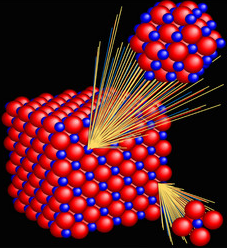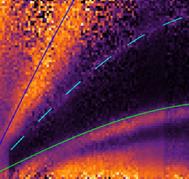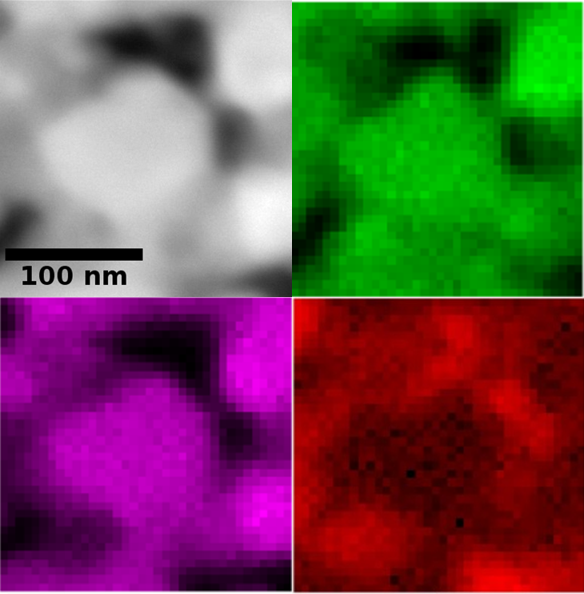
Agrégats atomiques : Introduction au nanomonde
Atomic Clusters: Introduction to the Nano World
La traduction anglaise du livre de Michel Broyer (équipe Agrégats et Nanostructures) et de Patrice Mélinon (équipe Transport, Nanomagnétisme et Matériaux pour l’Energie) sur les agrégats vient d’être publiée le 20 Juin chez EDP Sciences. Son titre est : "Atomic Clusters : Introduction to the Nano World".
The english traduction of the book of Michel Broyer (team Agrégats et Nanostructures) and Patrice Mélinon (team Transport, Nanomagnétisme et Matériaux pour l’Energie) on clusters was just published by EDP Sciences june 20th. It is entitled, "Atomic Clusters: Introduction to the Nano World".
L’objet de ce livre est de décrire les principes de base qui régissent les nanosciences et particulièrement la nano-physique. Les auteurs montrent comment la physique et la chimie des atomes influencent les propriétés des nano-objets et comment leurs caractéristiques évoluent avec la taille. Ce premier volume est consacré aux agrégats dans l’état fondamental et explique comment la symétrie organise l’arrangement des atomes en fonction de la taille. Des applications sont données pour la transition isolant-métal, les métaux de transition, le magnétisme et la catalyse. Un deuxième tome sera publié prochainement en français puis ensuite en anglais. Il concernera la thermodynamique des agrégats et leurs propriétés optiques
The aim of this book is to describe the basic principles governing nanoscience, and nanophysics in particular. The authors show how the physics and chemistry of atoms influence the properties of nano-objects. They also describe how the properties of macroscopic materials are modified when their size decreases. This first volume is devoted to aggregates or nanoparticles in the ground state. It shows how binding energy and symmetry properties govern the arrangement of atoms according to their electronic structure. Applications are given for insulator-metal transition, transition metal clusters, magnetism and catalysis. A second volume will be published soon and will describe the thermodynamics and optical properties of clusters.



Du graphite fluoré pour améliorer le rendement de sources de neutrons
Fluorinated graphite to improve the performance of neutron sources
Sylvie Le Floch et Vittoria Pischedda, (équipe Energie), en collaboration avec des collègues de Grenoble, Nancy, Dubna, Raleigh, Almaty et Tenerife, ont publié un article intitulé "Poly(dicarbon monofluoride) (C2F)n bridges the neutron reflectivity gap" dans la revue Carbon.
Sylvie Le Floch et Vittoria Pischedda (Energy team), with colleagues from Grenoble, Nancy, Dubna, Raleigh, Almaty and Tenerife, published an article entitled "Poly(dicarbon monofluoride) (C2F)n bridges the neutron reflectivity gap" dans la revue Carbon.
Le réflecteur est un élément fondamental dans une source de neutrons. Or, les réflecteurs de neutrons actuels présentent un déficit de réflectivité dans la gamme des neutrons froids et très froids (c.-à-d. neutrons lents, 50 et 700 m/s soit λn= 80 à 6 Å). Afin de concevoir des réflecteurs de neutrons efficaces dans toute la gamme de longueurs d'onde des neutrons, de nouveaux matériaux doivent être développés pour combler le gap de réflectivité non couvert par les super-miroirs et les réflecteurs en graphite.
En intercalant du fluor dans du graphite, les auteurs ont montré qu’il était possible de tripler la distance interplanaire. Ils ont alors construit un diffractomètre à neutrons lents pour mesurer le pouvoir de réflexion de ces fluorures de carbone (C2F)n présentant une distance inter-couches de ∼9 Å, et démontré que ces composés réfléchissent efficacement les neutrons froids. Leur intégration dans une nouvelle génération de réflecteurs de neutrons ouvre la voie à la conception de sources de neutrons d'un nouveau type.
En intercalant du fluor dans du graphite, les auteurs ont montré qu’il était possible de tripler la distance interplanaire. Ils ont alors construit un diffractomètre à neutrons lents pour mesurer le pouvoir de réflexion de ces fluorures de carbone (C2F)n présentant une distance inter-couches de ∼9 Å, et démontré que ces composés réfléchissent efficacement les neutrons froids. Leur intégration dans une nouvelle génération de réflecteurs de neutrons ouvre la voie à la conception de sources de neutrons d'un nouveau type.
The reflector is a fundamental element in a neutron source. However, current neutron reflectors have a reflectivity gap in the range of cold and very cold neutrons (i.e., slow neutrons, 50 to 700 m/s or λn= 80 to 6 Å). To design efficient neutron reflectors over the full range of neutron wavelengths, new materials need to be developed to fill the reflectivity gap not covered by super-mirrors and graphite reflectors. By intercalating fluorine into graphite, the authors have shown that it is possible to triple the interplanar distance. They then built a slow neutron diffractometer to measure the reflectivity of these carbon fluorides (C2F)n with an interlayer distance of ∼9 Å, demonstrating that these compounds reflect cold neutrons efficiently. Their integration into a new generation of neutron reflectors paves the way for the design of a new type of neutron source.



Refroidissement d’un nanodisque sur une membrane
Cooling of a nanodisk on a membrane
Clément Panais, Noëlle Lascoux, Paolo Maioli, Francesco Banfi, Fabrice Vallée, Natalia Del Fatti et Aurélien Crut (équipe FemtoNanoOptics), en collaboration avec une collègue du CEA, ont publié un article intitulé "Impact of supporting nanometric membranes on the thermo-optical dynamics of individual plasmonic nanodisks" dans la revue Nanoscale.
Clément Panais, Noëlle Lascoux, Paolo Maioli, Francesco Banfi, Fabrice Vallée, Natalia Del Fatti and Aurélien Crut (FemtoNanoOptics team), with a colleague from CEA, published an article entitled "Impact of supporting nanometric membranes on the thermo-optical dynamics of individual plasmonic nanodisks" in the journal Nanoscale.
Comprendre les modalités spécifiques régissant les échanges de chaleur à l’échelle nanométrique constitue à la fois une question fondamentale complexe et un enjeu majeur dans des domaines tels que la nanoélectronique, la thermoélectricité et les thérapies photothermiques. Refroidir efficacement des composants électroniques nanométriques est, par exemple, crucial pour éviter les dommages thermiques et poursuivre la miniaturisation des dispositifs électroniques.
Dans ce contexte, les chercheurs de l’ILM ont étudié, par la combinaison de techniques optiques et de simulations numériques, les échanges thermiques entre deux nanostructures individuelles de faible épaisseur (environ 10 nm), respectivement 0D et 2D : un nanodisque d’or et une membrane diélectrique ultrafine. Ils ont ainsi pu montrer que la dynamique de refroidissement du nanodisque, consécutive à son échauffement soudain, dépend fortement de l’épaisseur de la membrane sur laquelle il est déposé. Cette observation a été reliée au caractère bi- ou tridimensionnel de la diffusion de la chaleur dans une membrane, selon son épaisseur et l’échelle de temps considérée. La contribution de l’échauffement des membranes aux signaux optiques mesurés a également pu être mise en évidence et modélisée.
Dans ce contexte, les chercheurs de l’ILM ont étudié, par la combinaison de techniques optiques et de simulations numériques, les échanges thermiques entre deux nanostructures individuelles de faible épaisseur (environ 10 nm), respectivement 0D et 2D : un nanodisque d’or et une membrane diélectrique ultrafine. Ils ont ainsi pu montrer que la dynamique de refroidissement du nanodisque, consécutive à son échauffement soudain, dépend fortement de l’épaisseur de la membrane sur laquelle il est déposé. Cette observation a été reliée au caractère bi- ou tridimensionnel de la diffusion de la chaleur dans une membrane, selon son épaisseur et l’échelle de temps considérée. La contribution de l’échauffement des membranes aux signaux optiques mesurés a également pu être mise en évidence et modélisée.
Understanding the specific mechanisms governing heat exchange at the nanoscale is both a complex fundamental question and a major issue in fields such as nanoelectronics, thermoelectricity, and photothermal therapies. Efficiently cooling nanometric electronic components is, for example, crucial to prevent thermal damage and to continue the miniaturization of electronic devices.
In this context, ILM researchers studied, using a combination of optical techniques and numerical simulations, the thermal exchanges between two individual nanostructures with small thicknesses (about 10 nm), respectively 0D and 2D: a gold nanodisk and an ultrathin dielectric membrane. They were able to show that the cooling dynamics of the nanodisk, following its sudden heating, strongly depend on the thickness of the membrane on which it is deposited. This observation was linked to the bi- or three-dimensional nature of heat diffusion in a membrane, depending on its thickness and the timescale considered. The contribution of the membrane heating to the measured optical signals was also demonstrated and modeled.
In this context, ILM researchers studied, using a combination of optical techniques and numerical simulations, the thermal exchanges between two individual nanostructures with small thicknesses (about 10 nm), respectively 0D and 2D: a gold nanodisk and an ultrathin dielectric membrane. They were able to show that the cooling dynamics of the nanodisk, following its sudden heating, strongly depend on the thickness of the membrane on which it is deposited. This observation was linked to the bi- or three-dimensional nature of heat diffusion in a membrane, depending on its thickness and the timescale considered. The contribution of the membrane heating to the measured optical signals was also demonstrated and modeled.




















